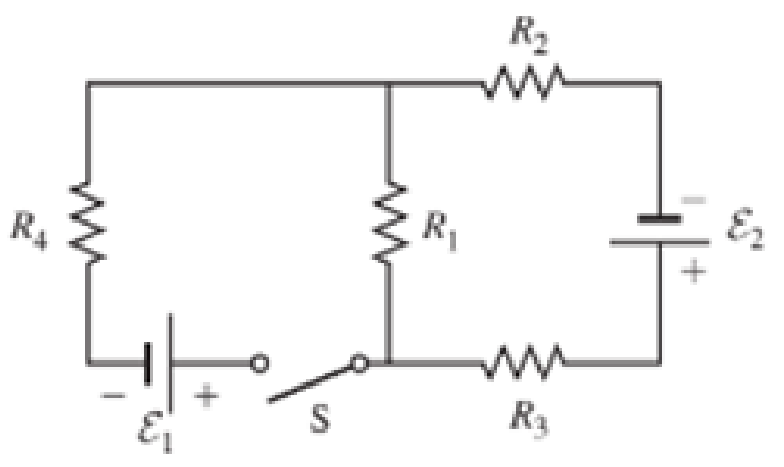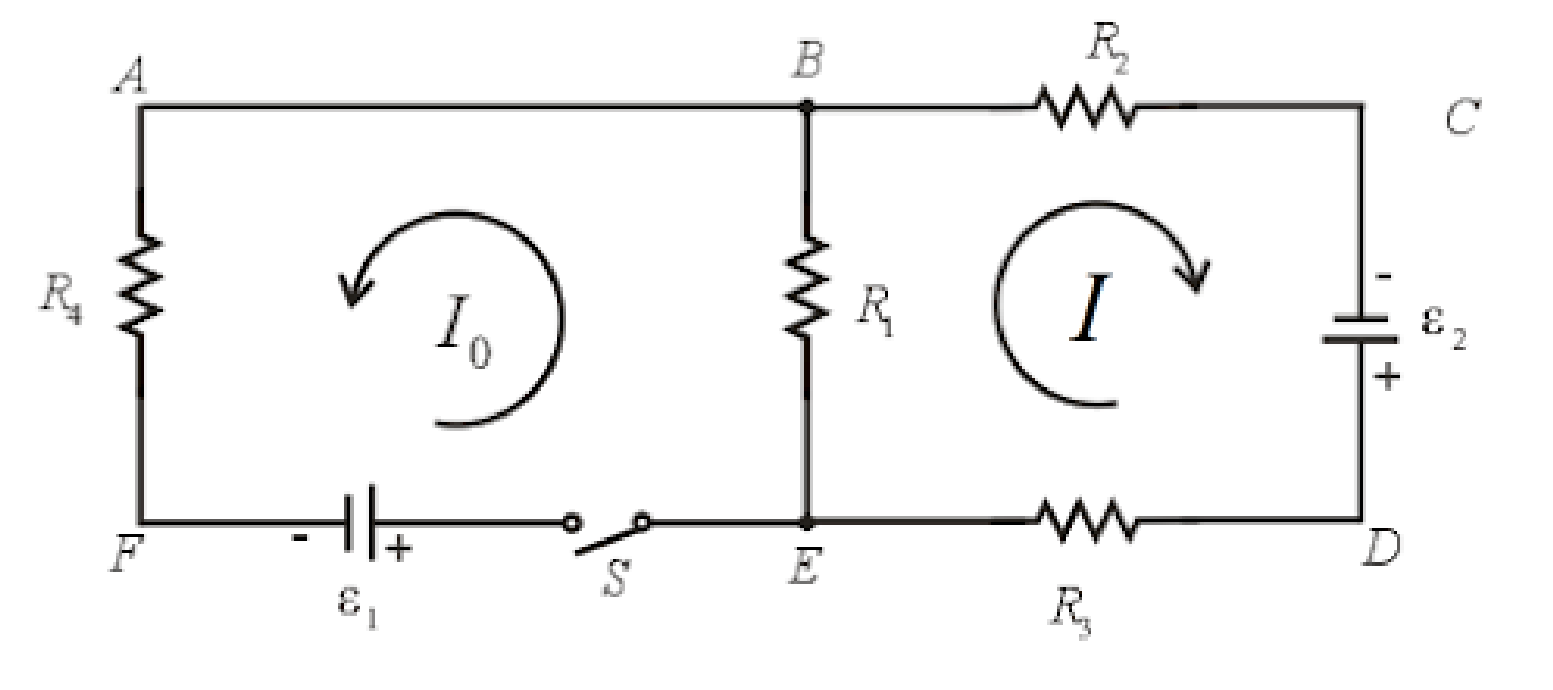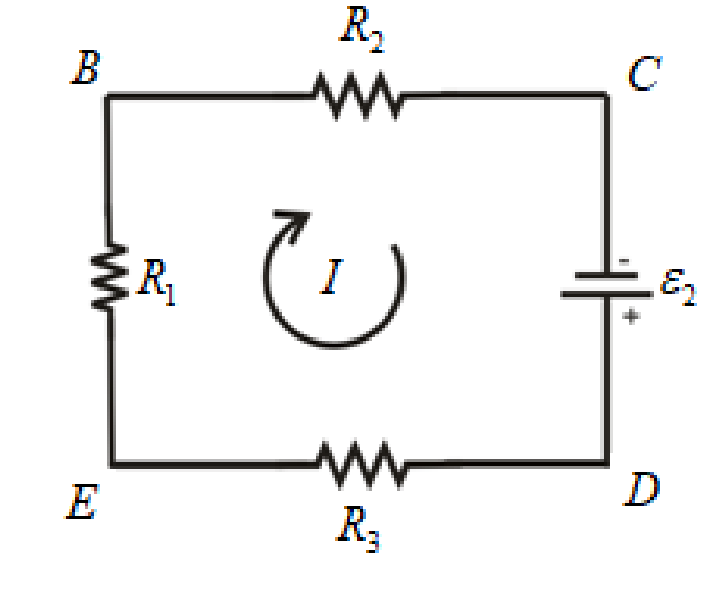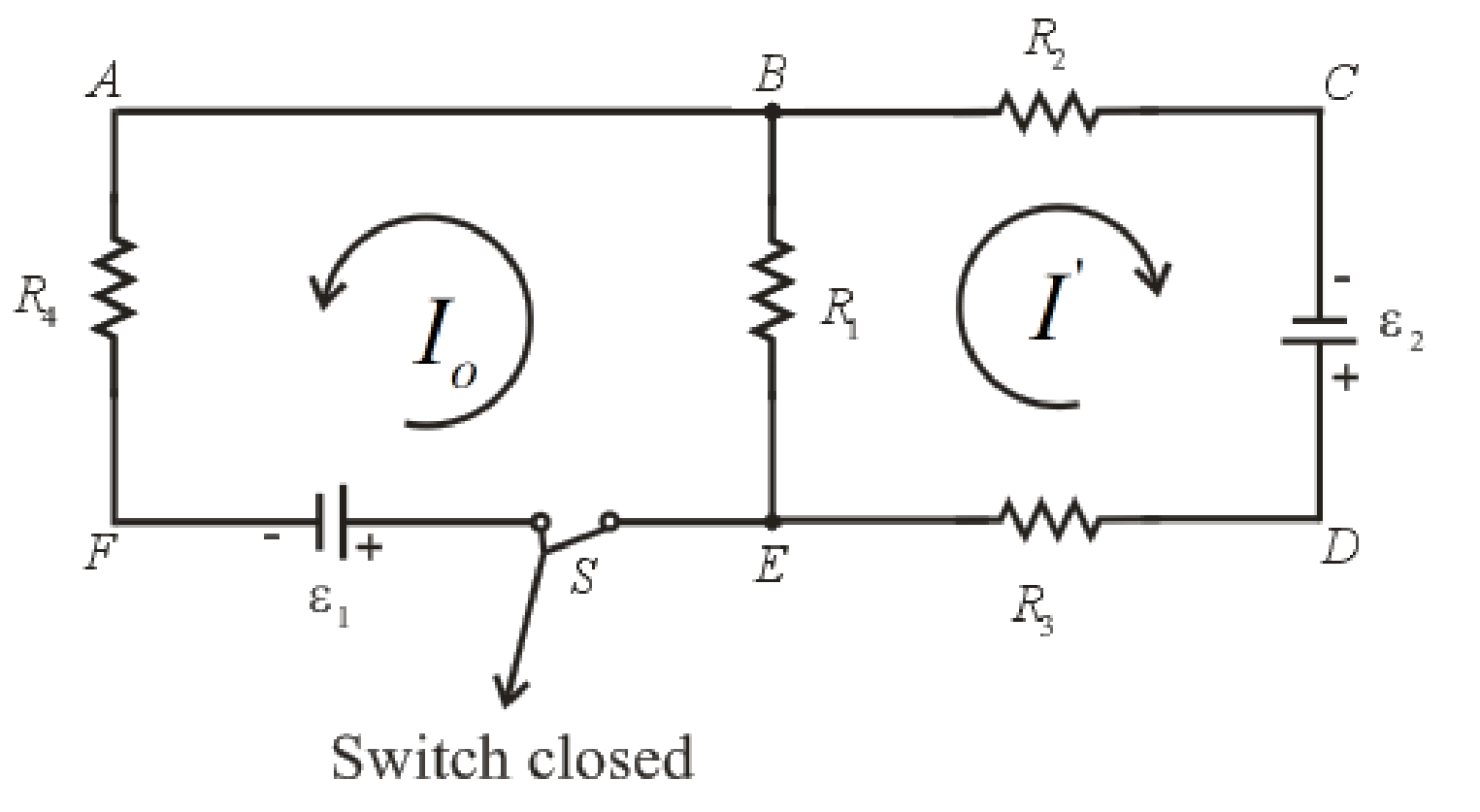
The emfs in Figure P29.43 are ε1 = 6.00 V and ε2 = 12.0 V. The resistances are R1 = 15.0 Ω, R2 = 30.0 Ω, R3 = 45.0 Ω, and R4 = 60.0 Ω. Find the current in each resistor when the switch is
- a. open and
- b. closed.

(a)
The current in each resistor when the switch is open.
Answer to Problem 43PQ
The current flowing through the resistor
Explanation of Solution
As the switch is kept open; the current in the wire EFAB will be zero as the circuit is disconnected.

The resistors in the loop BCDEB are connected in series. The current flowing in all the elements in a series circuit is constant.

Write the expression for the equivalent resistance in the loop BCDEB as.
Here,
Write the expression for the current in the loop BCDEB as.
Here,
No current flows through the resistor
Conclusion:
Substitute
Substitute
Thus, the current flowing through the resistor
(b)
The current in each resistor when the switch is closed.
Answer to Problem 43PQ
The current flowing through the resistor
Explanation of Solution
The switch is closed, the current starts flowing through all the resistors in the circuit.
The circuit diagram for the closed switch is shown below.

Write the expression for the Kirchhoff’s voltage law in loop ABCDEFA.
Here,
Write the expression for the Kirchhoff’s voltage law in loop ABEFA.
Write the expression for the current through resistor
Here,
Write the expression for the current through resistor
Here,
Write the expression for the current through resistor
Here,
Write the expression for the current through resistor
Here,
Conclusion:
Substitute
Rearrange the above equation for
Substitute
Substitute
Rearrange the above expression for
Substitute
Substitute
Substitute
Substitute
Substitute
Thus, the current flowing through the resistor
Want to see more full solutions like this?
Chapter 29 Solutions
Physics for Scientists and Engineers: Foundations and Connections
- RT = 4.7E-30 18V IT = 2.3E-3A+ 12 38Ω ли 56Ω ли r5 27Ω ли r3 28Ω r4 > 75Ω r6 600 0.343V 75.8A Now figure out how much current in going through the r4 resistor. |4 = unit And then use that current to find the voltage drop across the r resistor. V4 = unitarrow_forward7 Find the volume inside the cone z² = x²+y², above the (x, y) plane, and between the spheres x²+y²+z² = 1 and x² + y²+z² = 4. Hint: use spherical polar coordinates.arrow_forwardганм Two long, straight wires are oriented perpendicular to the page, as shown in the figure(Figure 1). The current in one wire is I₁ = 3.0 A, pointing into the page, and the current in the other wire is 12 4.0 A, pointing out of the page. = Find the magnitude and direction of the net magnetic field at point P. Express your answer using two significant figures. VO ΜΕ ΑΣΦ ? Figure P 5.0 cm 5.0 cm ₁ = 3.0 A 12 = 4.0 A B: μΤ You have already submitted this answer. Enter a new answer. No credit lost. Try again. Submit Previous Answers Request Answer 1 of 1 Part B X Express your answer using two significant figures. ΜΕ ΑΣΦ 0 = 0 ? below the dashed line to the right P You have already submitted this answer. Enter a new answer. No credit lost. Try again.arrow_forward
 Physics for Scientists and Engineers: Foundations...PhysicsISBN:9781133939146Author:Katz, Debora M.Publisher:Cengage Learning
Physics for Scientists and Engineers: Foundations...PhysicsISBN:9781133939146Author:Katz, Debora M.Publisher:Cengage Learning Physics for Scientists and Engineers with Modern ...PhysicsISBN:9781337553292Author:Raymond A. Serway, John W. JewettPublisher:Cengage Learning
Physics for Scientists and Engineers with Modern ...PhysicsISBN:9781337553292Author:Raymond A. Serway, John W. JewettPublisher:Cengage Learning Physics for Scientists and EngineersPhysicsISBN:9781337553278Author:Raymond A. Serway, John W. JewettPublisher:Cengage Learning
Physics for Scientists and EngineersPhysicsISBN:9781337553278Author:Raymond A. Serway, John W. JewettPublisher:Cengage Learning College PhysicsPhysicsISBN:9781938168000Author:Paul Peter Urone, Roger HinrichsPublisher:OpenStax College
College PhysicsPhysicsISBN:9781938168000Author:Paul Peter Urone, Roger HinrichsPublisher:OpenStax College Principles of Physics: A Calculus-Based TextPhysicsISBN:9781133104261Author:Raymond A. Serway, John W. JewettPublisher:Cengage Learning
Principles of Physics: A Calculus-Based TextPhysicsISBN:9781133104261Author:Raymond A. Serway, John W. JewettPublisher:Cengage Learning





